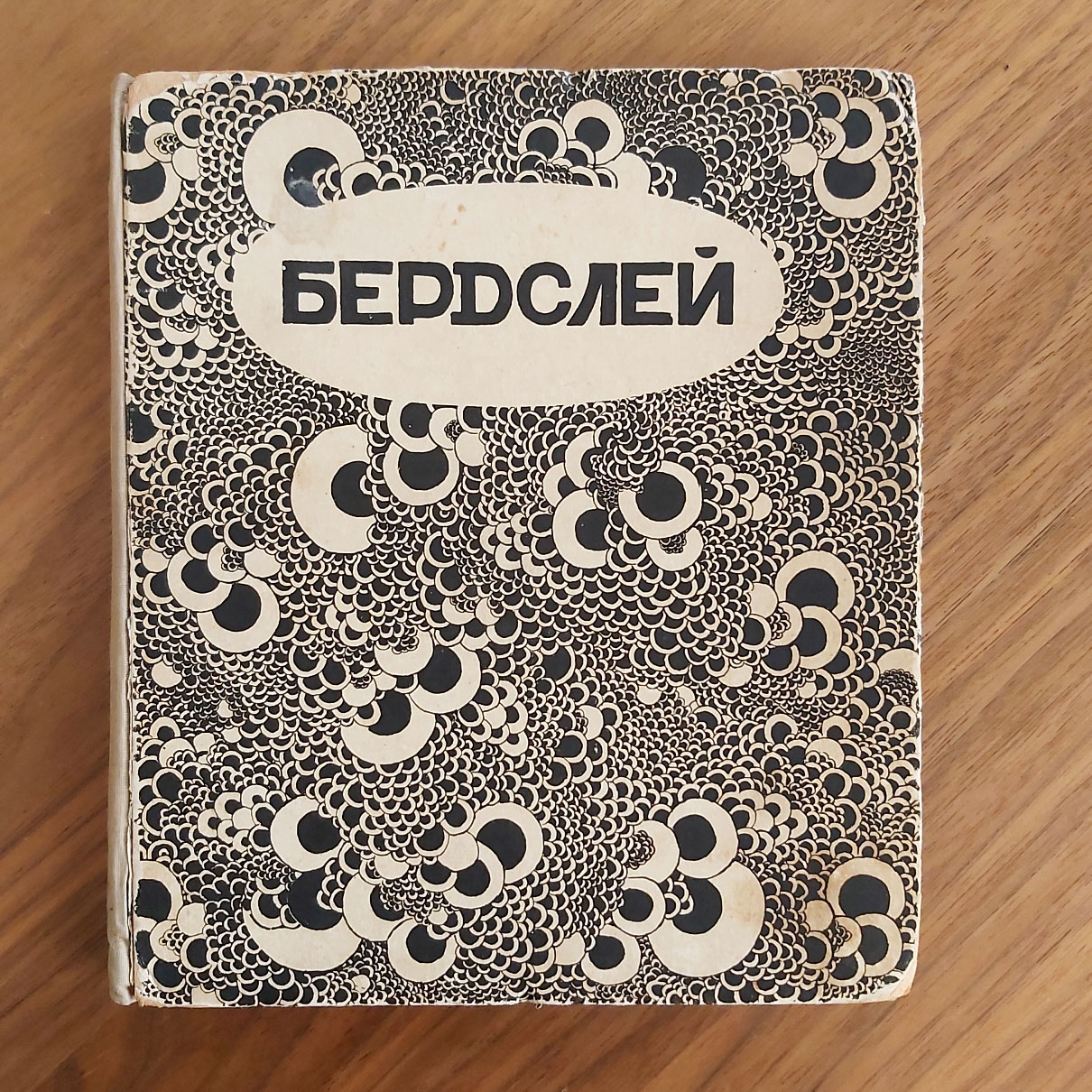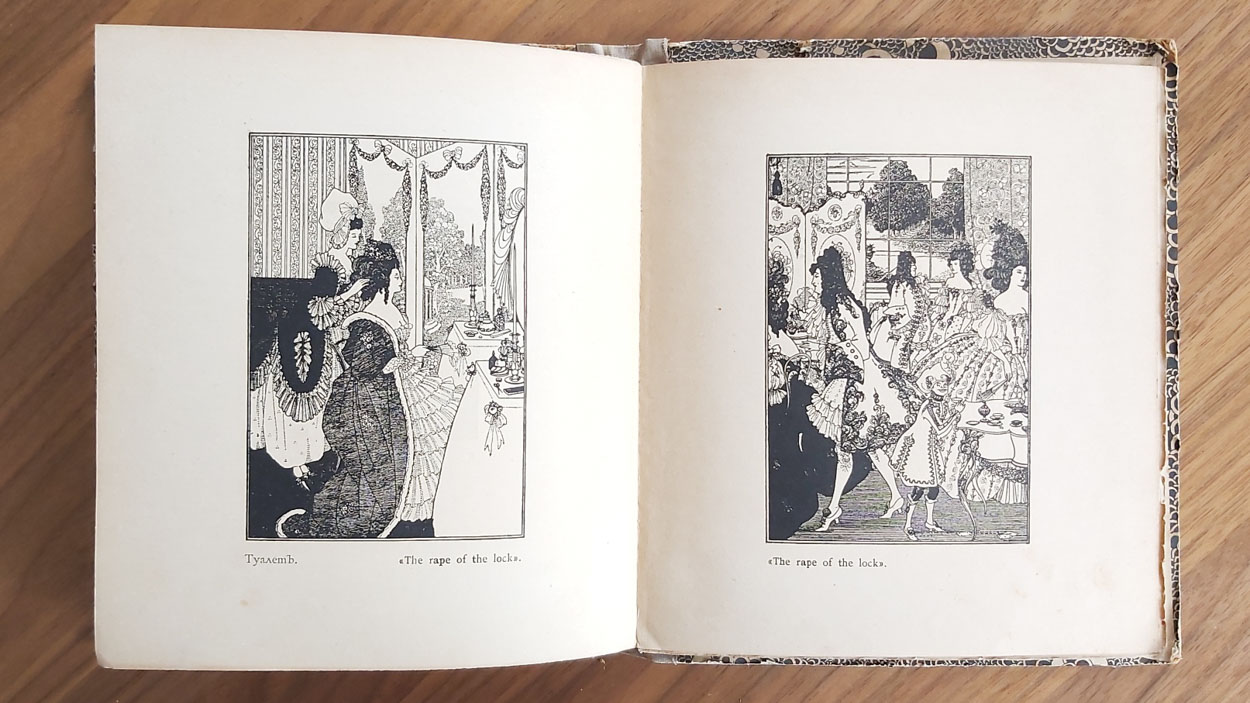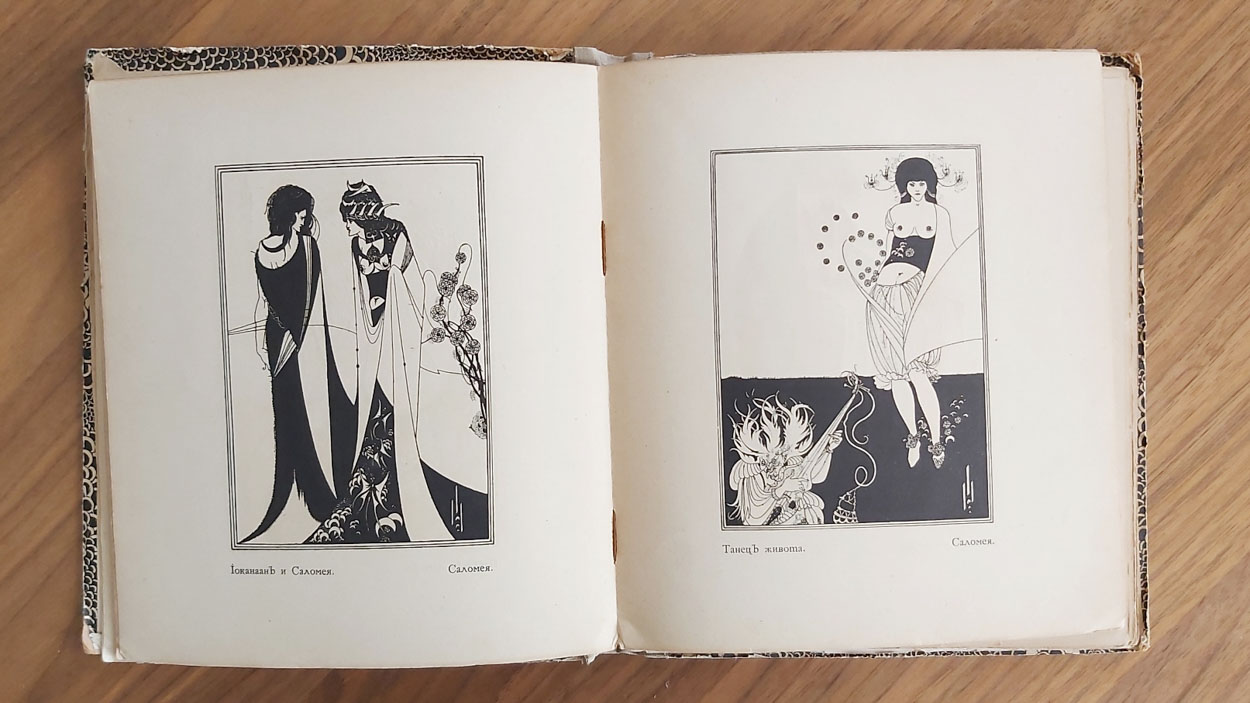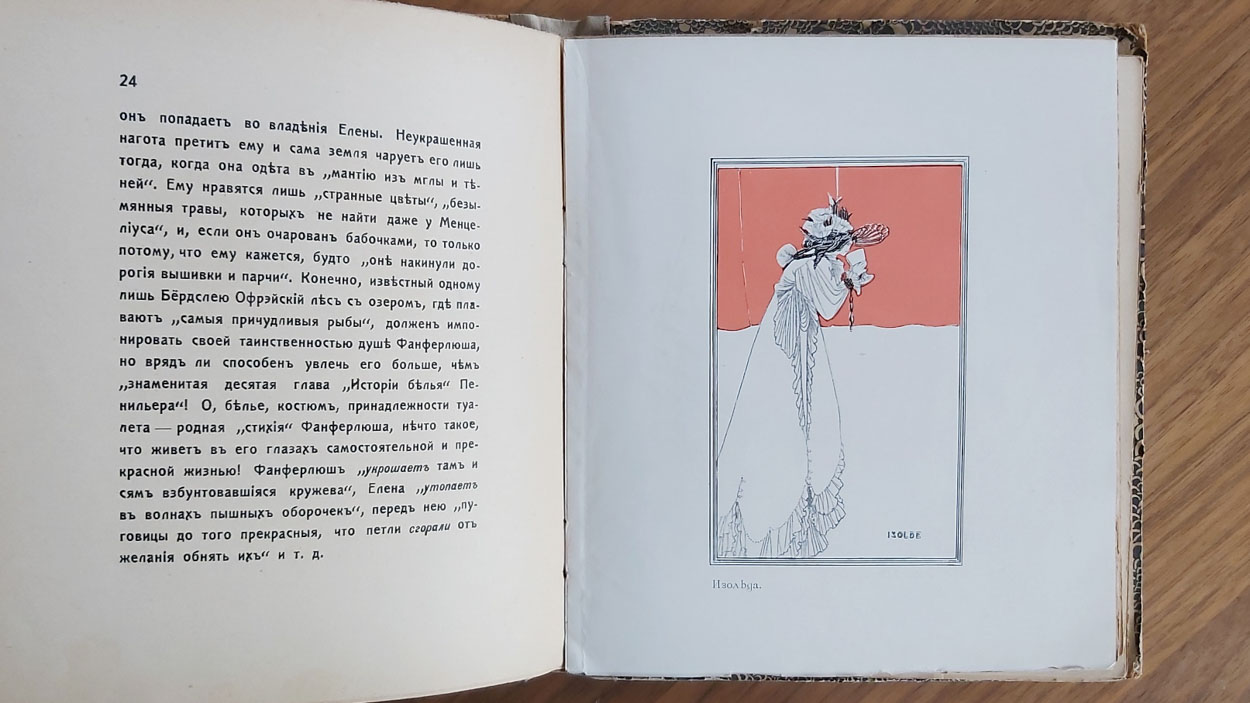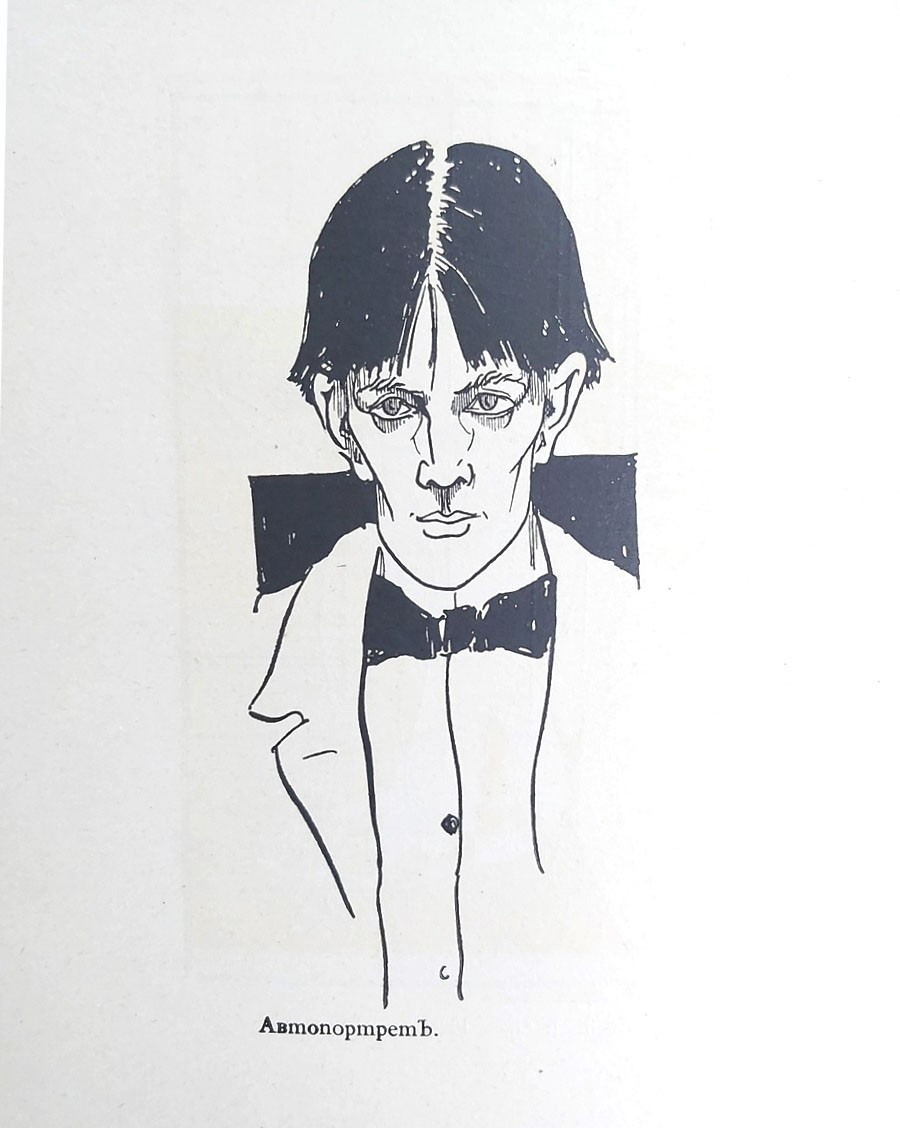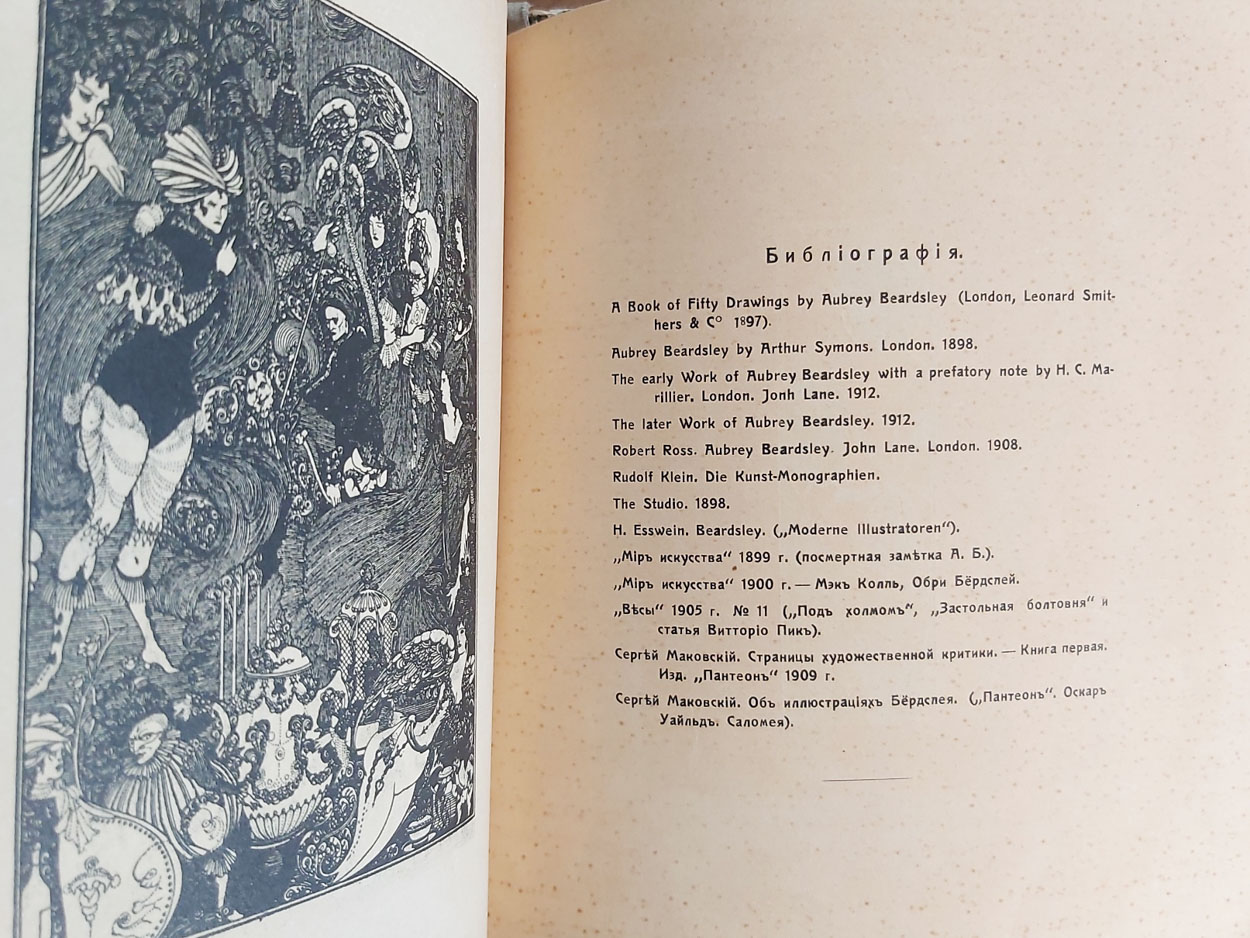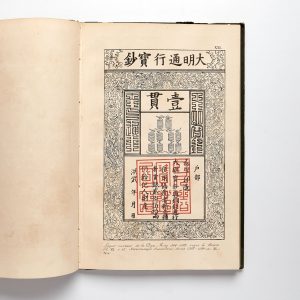Our Notes & References
First edition of the first Russian study on Beardsley, richly illustrated and published by the first female theatrical director in Russia.
Discovered in the mid-1890s by the Mir Iskusstva [World of Art] group of Russian aesthetes, “Beardsley was soon fashioned into a cultural icon” (Dovzhyk). The circulation of his work in Russia began with the opening volume of the group’s eponymous periodical in the late 19th century and gradually, the fascination with Beardsley extended far beyond the small circle of critics and publishers: his style was absorbed as the guiding principle of modern Russian design and modernist art. “In literature, Beardsley’s name was integrated into the vast body of modernist poetry and prose, with homages from authors as different as Andrei Bely, Anatolii Mariengof, and Aleksei Lozina-Lozinskii, to name but a few” (Dovzhyk).
An ardent admirer of both Beardsley and Wilde, the Symbolist theatrical director Nikolai Evreinov (1879–1953) attempted to stage Oscar Wilde’s Salomé in 1908 using Beardsley’s celebrated drawings in its design. However this “lush and erotic production” (Proffer) was judged unsuitable by authorities and suppressed; “unfortunately the order did not come down until after the final dress rehearsal, by which time huge expenses had been incurred” (Polonsky, 167).
A few years later, Evreinov wrote this essay about Beardsley for a series of monographs featuring the most remarkable contemporary artists. Richly illustrated with Beardley’s works, it is the first Russian study about the English artist: Somov had published a booklet in 1908 with only plates and no text; while Evreinov here focuses on his biography and artistic influences. He includes at the end a bibliography of works in Russian and English, without mentioning a volume about Beardsley by Kuzmin and Likiardopulo, published the same year and therefore most probably later than the present edition.
Evreinov’s essay was published by Natalia Butkovskaia (1878-1948), the first female theatrical director in Russia. She collaborated closely with Evreinov and published around ten other books for these series. To enhance her publications, she opened a zinc print shop to reproduce colourful and black-and-white illustrations and photographs for the issues. The design of the first books, including the present one, was created by Mikhail Iakovlev, a theatre artist who depicted on the wrappers Butkovskaia’s coat of arms with a falcon over a fortress wall, holding a horseshoe with a cross and a bell in its claws.
A rare publication in Western institutions, especially when complete: we could trace only five copies: two in the US (NYPL and Princeton), one in the UK only (BL) and two in France (BnF and Bibl. d’Art & d’Archeologie-RCON). These last two seem to have only 18 leaves of plates, against Princeton’s 21, like here.
Provenance
Inscription to upper endpaper “Leningrad. Aterber, 1933 god”; Andrei Vladimirovich Ikonnikov (1926 – 2001; renown Soviet and Russian architect and historian of architecture; discreet stamp on upper wrapper).
From the estate of Geoffrey Elliott (1939-2021), banker of Russian descent, author of books on 20th-c. history. Geoffrey and his wife Fay were noted collectors, especially of Oscar Wilde, Evelyn Waugh and other literary figures. Russia was also an important theme: Geoffrey’s grandparents were interned in a Siberian tsarist prison camp before the October Revolution, and he focused most of his published works on the Cold War.
The Elliotts donated a significant part of their collection to the library of Leeds University in 2002, but kept the Russia-related items, which we consequently acquired.
Bibliography
Sasha Dovzhyk, Audrey Beardsley in the Russian “World of Art”, British Art Studies, Issue 18. (online)
Sergei Bolgachev, Izdatel N.I. Butkovskaia (online).
Rachel Polonsky, English Literature and the Russian Aesthetic Renaissance, Cambridge Studies in Russian Literature, 1998, p. 167.
Ellendea Proffer, Evreinov: fotobiografia. Ardis, 1981.
Physical Description
Small 4to (21.4 × 18.5 cm). Frontispiece of mounted portrait, title with colour mounted portrait to verso, 48 pp., with 21 plates printed recto-verso, including one in colour.
Binding
Original publisher’s printed wrappers by Iakovlev within publisher’s printed boards, grey cloth spine.
Condition
Binding rubbed and bumped at extremities, lower wrapper lightly foxed; light browning to paper, minor marginal staining to a few pages.

